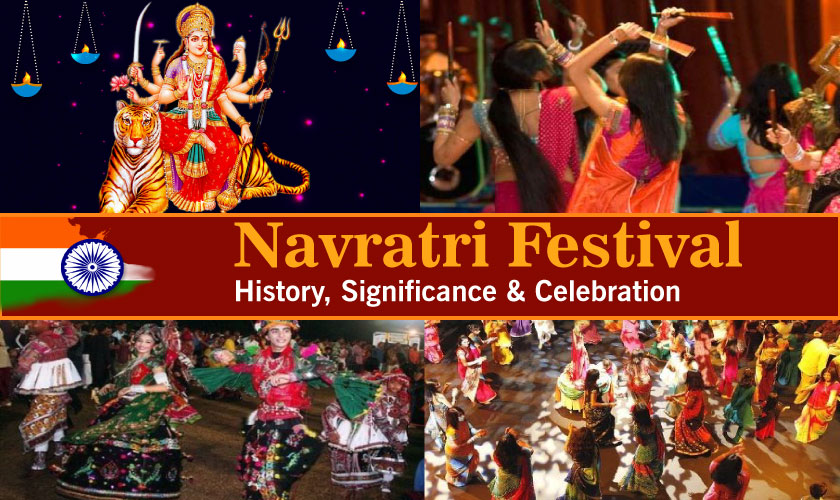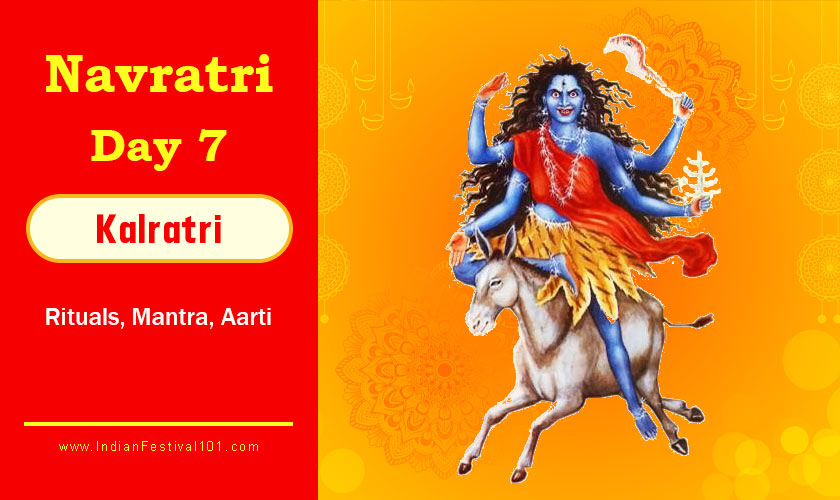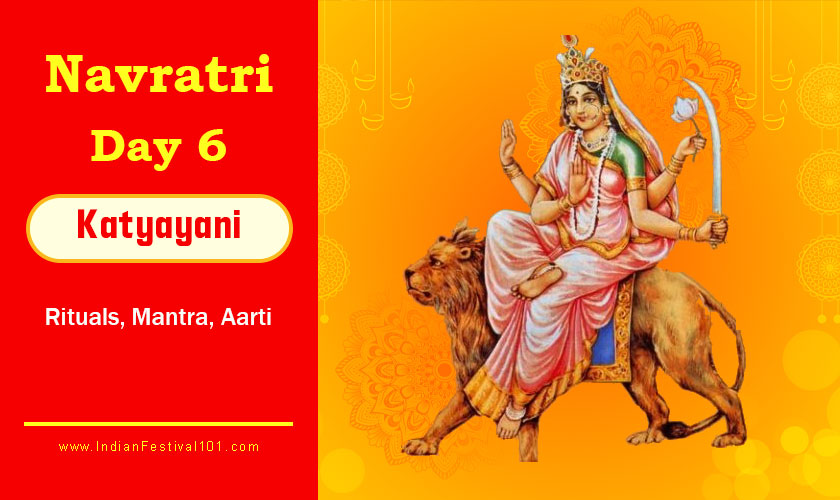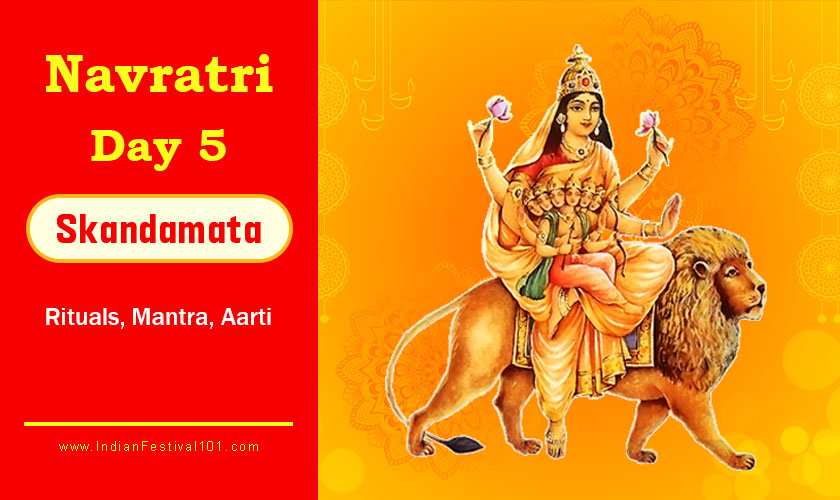Navratri festival is one of the most popular religious Hindu festivals. This festival is known for spirituality and is dedicated to the goddess Durga. Many of us don’t know that this festival is celebrated 4 times a year. Do you know why Is Navratri celebrated? What is the spiritual meaning of Navratri? We are here to talk about some of the interesting facts about the Navratri festival and its significance. Being spiritual everyone should know about the goddess Durga story and its different forms.
4 Navratri in a Year
Navratri is one of the Most Important Hindu Festivals in India. The festival is celebrated 4 times a year. Two of them are known as Gupta Navratri while the other two are Sharadiya Navratri and Chaitra Navratri. This festival is also known for its spiritual importance. Check: All 4 Navratri Date
Spiritual Meaning of Navratri
‘Navratri’ means ‘nine nights.’ ‘Nava’ means ‘nine,’ and ‘Ratri’ means ‘night.’ The prayer, chanting, and meditation performed during Navratri connect us with our spirit. Getting in touch with the spirit invokes positive qualities within us and destroys laziness, pride, obsession, cravings, and aversions. When stress in the form of negative emotions is destroyed, we experience the deep rest of the transforming nine nights.
Significance of Navratri Festival
The festival has its unique importance since we offer prayer to unmarried young girls in the form of the goddess.
Navratri: A Spiritual Festival
Navratri is the best time to become spiritual and experience the benefits. To get the blessings of goddess Durga, devotees are involved in spiritual practices, chant mantras and refrain from their mind and body. During the 9 Days of Navratri, keep fast during Navratri 9 days, people keep themselves spiritual,
Navratri: A Cultural Festival
In the diverse Indian culture, the Navratri festival is celebrated as per the local culture and tradition. Some of the Indian states celebrate Navratri as a cultural festival. They organise cultural events, fairs and local traditions and are deeply involved in the Navratri celebration. The Cultural Diversity of India gives us the chance to witness this festival celebration in different ways. There are some popular places where the Navratri celebration is memorable.
Navratri Celebration in Bengal
Navratri is warmly welcomed in West Bengal since this festival is a part of Bengali culture. Navratri in West Bengal is known as Durga Puja. You can see the Pandals and Durga Idols on the streets of Kolkata during Navratri or Durga Puja Festival. Know more about the Durga Puja Celebration in Bengal.
Navratri Celebration in Gujarat
Navratri is celebrated as a cultural festival in Gujarat. The festival celebration becomes more beautiful by adding festival activities and programs at different public places. people gather there and dance and sing to enjoy the real flavour of Garba dance. Navratri festival is warmly welcomed in Gujarati culture. Garba celebration is a memorable event held in Gujarat during Sharadiya Navratri
Also Read: 9 Colors of Navratri
Nine Form of Goddess Durga
During Navratri, each day is dedicated to a different form of Goddess Durga, known as her avatars. These forms represent various aspects of divine energy, from compassion to strength, and devotees meditate upon these forms during the festival. Know more: Nine Days of Goddess Durga
Story of Navratri Festival
There is some history of Navratri or you can say the story of Navratri’s celebration in north India, east India, and other parts of the region
Story of Maa Durga and Mahishasura
Shardiya Navratri is rooted in the legendary battle between the goddess Durga and the demon Mahishasura. The goddess, symbolizing the divine feminine energy, battled the evil demon for nine nights and ten days, ultimately defeating him on the tenth day, which is celebrated as Vijayadashami or Dussehra.
The most prevalent legend is the story of Mahishasura, the buffalo-headed demon king, who pleased Lord Shiva and was, granted the boon that he would be invincible and undefeatable by any man. But soon, Mahishasura set out on a rampage killing people for no reason and even driving the deva out of ‘heaven’.
The Gods collectively went to Lord Shiva and pray him to do something, to protect the people. Thus, the Trinity of Brahma, Vishnu, and Shiva invested their powers in energy that took the form of Goddess Durga to conquer the demon Mahishasura.
The Gods also offered her their distinct weapons such as the axe and the sword. Mahishasura was taken in by Goddess Durga’s beauty and approached for marriage.
The Goddess agreed but set forth a challenge that he would defeat her in a battle, and then she would get married. The battle lasted for nine nights and on the ninth night, Goddess Durga beheaded Mahishasura. The nine nights came to be known as Navratri, while the tenth day was called Vijayadashmi, the final day when truth and goodness prevail over evil.
Also Read:- Navratri Ashtami Kanya Pujan
Story of Daksha and Sati
This is related to the famous legend of Sati. The king of the Himalayas, Daksha had a daughter named Uma. She wished to marry Lord Shiva and did penance to please him. When Lord Shiva came to marry her, his intimidating countenance (clothed in tiger skin with snakes around his neck) and that of the people accompanying him disconcerted Daksha.
Later, when he organized a grand-scale ‘yagna’, he deliberately refrained from inviting his daughter and son-in-law. Realizing the magnitude of the insult, Uma immolated herself in the ‘Agni Kund’.
Shiva became furious and did Tandava dance with Uma on his shoulder. The dance unleashed the forces of destruction, enough to threaten nature’s balance.
To end Shiva’s destructive anger, Narayana cut Uma’s body and the different parts of her charred body fell in different parts of the country and the world. The places where the parts fell are worshipped today as ‘Shakti Peeths’ and she came to be known as Sati.
Brahma reassured Shiva that Uma would take re-birth and unite with Lord Shiva as his consort. In her reincarnation, she fulfilled her destiny. Hence, Navratri is celebrated as the homecoming of Uma with Ganesh, Kartik, Saraswati, and Lakshmi along with companions Jaya and Bijaya during Sharad Ritu.
Also Read:- Shailputri 1st Day of Navratri
The Lotus Legend of Rama and Ravana
As per the epic Ramayana, at the behest of Narada Muni, Lord Rama worshipped Goddess Durga in her nine aspects to earn the blessings of Ma Shakti to defeat Ravana, the powerful king of Lanka who had abducted Sita. He continued his puja for nine days and nights with lotuses.
He was short of one lotus and thought of offering his eye to overcome the shortfall, when Maa Durga appeared before him, urging him not to make the sacrifice and blessing him. On the tenth day, Lord Rama was successful in killing Ravana.
The nine days are observed ritualistically as Navratri by devotees and the tenth day is celebrated as ‘Vijayadashmi’ or ‘Dussehra’, when good triumphed over evil.
Apart from the eternal message of good over evil, and virtue over misdeed, Navratri also has strong fertility associations. Ma Shakti is worshipped as the giver and one who nourishes all her children.
Navratri is a religious festival dedicated to the Hindu goddess Durga thus the festival is also known as Durga Puja. Navratri is a nine-day festival that comes four times a year. But 2 of them are warmly celebrated.
Conclusion
India is known for its diverse culture and people celebrate Navratri as per their regional culture and traditions. Bengal celebrates Navratri as Durga Puja. Gujarat celebrates this religious festival with its Gujarati culture and traditions.





